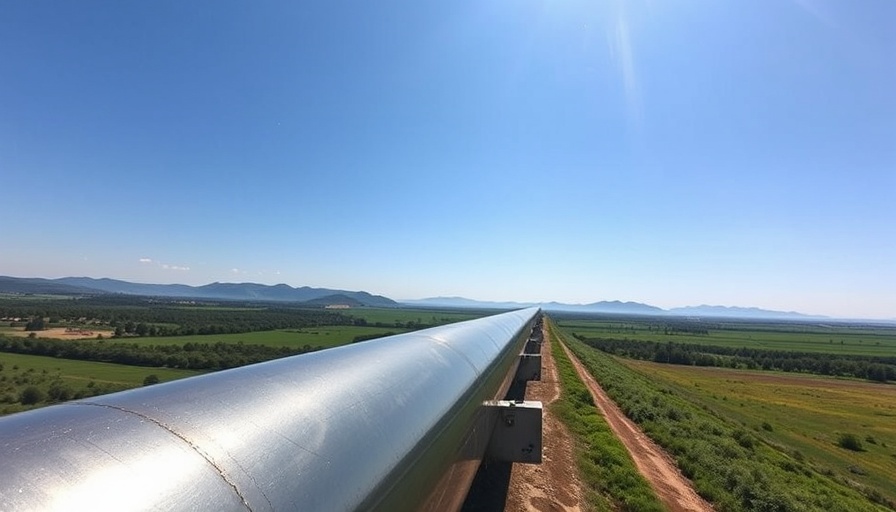
Boosting Natural Gas Takeaway Capacity: A New Era of Energy
In a significant development for U.S. energy infrastructure, the Energy Information Administration (EIA) has reported an impressive surge in natural gas pipeline completions across the nation. This expansion is particularly noteworthy as it dramatically enhances the capacity for transporting natural gas from production areas to distribution points. With utilities and energy markets evolving rapidly, understanding this transformation is crucial for residents, policymakers, and industry stakeholders alike.
The Numbers Behind the Boom
According to EIA statistics, the United States has seen marked increases in both the total length of new pipeline projects and operational capacity. In 2021 and 2022, over 5,400 miles of natural gas pipelines were completed, boosting takeaway capacity by approximately 30 billion cubic feet per day (bcf/d). This expansion was largely driven by a robust demand for natural gas in electricity generation and industrial applications.
A Response to Growing Demand
The recent pipeline completions are a direct response to the skyrocketing demand for natural gas, especially in the face of fluctuating oil markets and geopolitical uncertainties. Natural gas is regarded as a pivotal energy source due to its versatility and lower emissions compared to other fossil fuels. As states push towards greener energy solutions, natural gas remains a critical transition fuel, bridging the gap between coal reliance and renewable energy sources.
Regional Insights: Who Benefits?
The impact of these pipeline expansions is felt across multiple regions. States like Texas, Pennsylvania, and West Virginia, which are major natural gas producers, stand to benefit substantially. Enhanced takeaway capacity not only nets producers higher profits but also supports local job growth and stimulates economic development in these areas.
Environmental Considerations: A Double-Edged Sword
However, the growth of natural gas pipelines is not without controversy. Environmental advocates express concerns over the potential risks of pipeline leaks and the ongoing reliance on fossil fuels. The construction and operation of natural gas pipelines can lead to significant habitat disruptions and raise questions regarding air and water quality. It’s imperative for regulatory bodies to balance energy needs while upholding environmental protections.
Future Trends: What’s Next for the Industry?
Looking ahead, the pipeline industry faces both opportunities and challenges. With President Biden's administration aiming for significant reductions in greenhouse gas emissions, the future of natural gas as a primary energy source may come under scrutiny. However, experts forecast that natural gas will continue to play a crucial role in the energy mix, especially as infrastructure improvements reduce delivery costs and enhance efficiency.
Making Decisions with This Information
For consumers, understanding the dynamics of natural gas supply and pipeline networks can shape decisions related to energy consumption and conservation. Awareness of local prices, regulatory changes, and environmental impacts empowers individuals to make informed choices about their energy use.
Call to Action: Stay Informed
Whether you are a homeowner, policy influencer, or potential energy investor, keeping abreast of developments in the natural gas sector is essential. By staying informed, you ensure that you’re ready to adapt to changes in the market, whether they arise from policy shifts, technological advancements, or evolving public opinion. Read more about energy developments and their impacts on our lives in various news articles.
 Add Element
Add Element  Add Row
Add Row 



Write A Comment